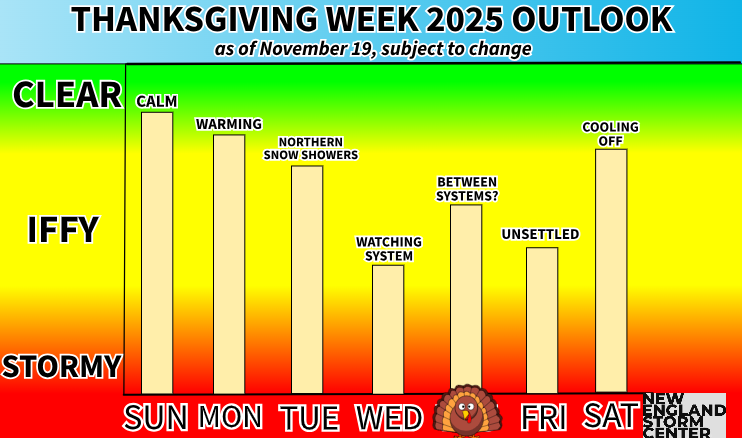Just How Wet Will Saturday End Up (Again)?
- Tim Dennis
- Jun 11
- 3 min read
New England's streak of wet weekends is set to continue this upcoming Saturday. Boston's streak of 12, going on 13, straight Saturdays with some form of wet weather is growing difficult to ignore, as we've been trying to do. After a couple days of summer warmth, sun and (mostly) dry conditions for all of New England, a frontal boundary will stall to the region's south, setting up cooler, cloudier and wetter weather for the weekend once again.

The frontal boundary responsible for this weekend will drop through New England through the day on Thursday. This cold front will drop through New England with little fanfare. Dry air in the mid-levels with ridging aloft will greatly limit precipitation chances with this front.
The northern third of New England will have the best chance at some showers. With continued (partial) sunshine and westerly winds, temperatures will remain up for most. The northern tier and high elevations will be a touch cooler with more clouds and an earlier arrival of the cold front.
Below: AIFS showing temperature departure from average Thursday afternoon:

The frontal boundary will remain to New England's south on Friday, but the day looks to be pretty much for everyone as it appears to be very weakly forced. At this point, Friday looks to see a bit of an increase in clouds with temperatures a notch lower than Wednesday and Thursday. Friday is looking more like a transition day from the brief warmth back to cooler and cloudier weather.
On Saturday, the cold front will remain stalled to the south of New England. Forcing will become stronger and moisture will increase over New England as an area of low pressure rides along the boundary. For much of this week, it was looking like high and low pressure would be facing off over New England, but, for most, it appears the low pressure may win the battle for all but northernmost New England.

General trends have generally been toward showers to push farther north into New England. The main reason behind this less optimistic trend is due to the northern area of high pressure splitting into two centers. With a center to the west and a center to the east rather than one center north of New England, it will create a bigger window for showers to sneak in.
Most models show showers pushing into at least the southern half of northern New England at some point Saturday. An interesting note is that the Euro's new A.I. model (AIFS) has been consistently showing a much farther south extent of showers. Even as of Wednesday morning, this model shows showers barely reaching north of Boston.
Below: AIFS (1st image) vs CMC (2nd image) showing their respective northernmost extent of precipitation on Saturday:
At this point, it does appear to be a pretty safe bet in showers for southern and central New England. With that said, the questions become how much rain will fall and how many wet hours will there be versus dry hours? There's mixed signals between more wet hours than dry hours or just some hit and miss showers through the day with more dry hours than wet hours. At this point, ensembles favor more in the likes of scattered hit and miss showers rather than a mostly rainy day.
Over half of major ensemble members show less than a half inch of total rainfall, with a smaller cluster showing a half inch to an inch for southern New England. The Weather Prediction Center's official forecast is calling for a half inch to an inch across southern New England with amounts steadily tapering moving north.Overall, we're thinking it'll be cloudy and showery, but not anywhere near an all-day washout with plenty of dry, albeit damp and raw, hours.
Below: Current precipitation forecast for Saturday to Sunday morning:

There's also heavily mixed signals on when exactly showers will be most numerous on Saturday. All of this uncertainty and disagreements among models and guidance is not a surprise. Stalled frontal boundaries are one of those tough patterns to work out, especially days in advance.
On top of that, the overall upper-level flow over the US is mostly zonal. This occurs when the jet stream lays flatter across the country, allowing systems to move through quickly. Timing out systems within a fast, zonal flow is a difficult task for current weather models. It will be interesting to see if the Euro's A.I. model, which has disagreed with conventional models in regards to this weekend, will end up being ahead of the game or not.







Comments